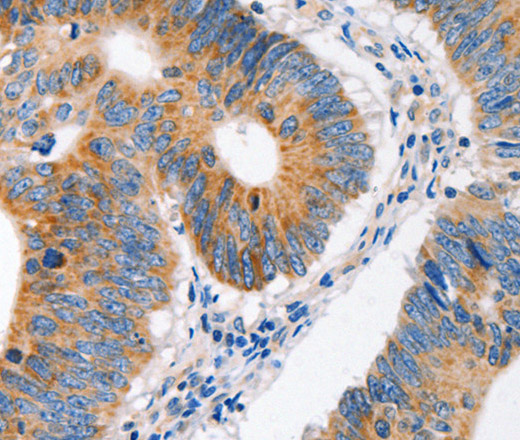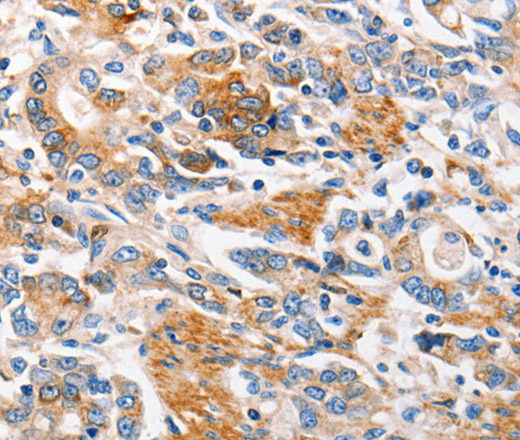MC1R Polyclonal Antibody
For reference only. Please follow the manual included in your kit for instructions.
Catalog Number
Product Name
MC1R Polyclonal Antibody
Catalog Number
RD78568A
Clonality
Polyclonal
Purification Method
Affinity purification
Isotype
IgG
Host
Rabbit
Background
This intronless gene encodes the receptor protein for melanocyte-stimulating hormone (MSH). The encoded protein, a seven pass transmembrane G protein coupled receptor, controls melanogenesis. Two types of melanin exist: red pheomelanin and black eumelanin. Gene mutations that lead to a loss in function are associated with increased pheomelanin production, which leads to lighter skin and hair color. Eumelanin is photoprotective but pheomelanin may contribute to UV-induced skin damage by generating free radicals upon UV radiation. Binding of MSH to its receptor activates the receptor and stimulates eumelanin synthesis. This receptor is a major determining factor in sun sensitivity and is a genetic risk factor for melanoma and non-melanoma skin cancer. Over 30 variant alleles have been identified which correlate with skin and hair color, providing evidence that this gene is an important component in determining normal human pigment variation.
Immunogen Information
Immunogen
Synthetic peptide of human MC1R
Swissprot
Q01726
Synonyms
CMM5MC1-RMC1RMelanocortin 1 receptorMelanocortin 1 receptor (alpha melanocyte stimulating hormone receptor)Melanocortin receptor 1Melanocyte-stimulating hormone receptorMelanotropin receptorMSH-RMSHRMSHRSHEP2
Gene Accession
NP_002377
Applications
Reactivity
Human,Mouse
Tested Applications
IHC,ELISA
Conjugation
Unconjugated
Dilution
IHC 1:50-1:200
Concentration
0.9 mg/mL
Storage Buffer
PBS with 0.05% sodium azide and 50% glycerol, PH7.4
Storage Instructions
Store at -20°C. Avoid freeze / thaw cycles.

